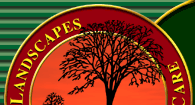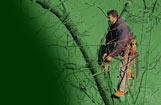


 |
 |
 |
 |
|
Frequently Asked Questions
A: Arboriculture is the care of trees and shrubs, particularly in urban settings. An arborist is a professional who cares for trees and other woody plants by pruning, fertilizing, monitoring for insects and diseases, consulting on tree related issues, and occasionally planting, transplanting and removing trees. Q: How can I tell if my trees are safe? A: You can have your trees inspected periodically by a certified arborist. Indications of weakness or decay are frequently visible. For example: your arborist should look for the presence of root or stem decay, vertical cracks, weak crotches, as well as dead or hanging limbs. The overall vigor of a tree should also be assessed for signs of decline, such as dieback from the tips of the branches; which can also be an indicator of root system instability. The root plate should be inspected for any sign of movement (example: uneven ground or recent stem leaning). Q: What is pruning? A: Pruning can be loosely defined as the removal of part of a plant for a reason. Q: Do all trees require pruning? A: No. Often times, trees do very well when left on their own. A certified arborist can review the condition, structure, vigor, growth rate and location of your trees and may suggest that no pruning is required. Q: What are the most common reasons to prune my trees? A: Some good reasons to prune include safety to people or property nearby, or in the “target” zone. This may consist of pruning out only damaged and dead limbs. Pruning to provide at least 8 to 10 feet of building clearance is typically recommended, in order to allow the circulation of air and penetration of light to clapboards and siding as well as denying access to animals and insects to attics and rooftops. Trees are pruned to promote good structure and maintain health. Trees may be pruned to improve aesthetics, symmetry or to “train” the tree to achieve the desired form or proportion. Pruning to preserve mature or significant trees by reducing weight and limiting wind resistance is often desirable. Sometimes, pruning is performed to remove diseased or insect infested tissue. Q: When would you recommend removing a tree? A: Occasionally trees become a liability rather than an asset to your property. This may be due to the high-risk associated with the likely failure of a tree. Other reasons may be to provide room for building additions, play areas or driveways. Often a particular specie of tree may be poorly suited to its’ environment, requiring constant “high maintenance” care, when a replacement plant makes better economic and ecological sense. Sometimes a desirable specimen may be overshadowed by and compete with, a less attractive or declining tree. |
|||||||